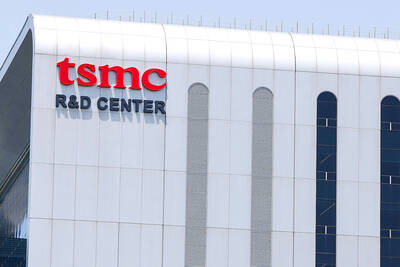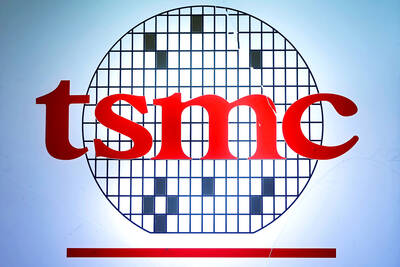Uber Technologies Inc and Lyft Inc drivers in the US make a median profit of US$3.37 per hour before taxes, according to a report suggesting that a majority of ride-share workers make less than minimum wage and that many actually lose money.
Researchers performed an analysis of vehicle cost data and a survey of more than 1,100 drivers for the ride-hailing companies for the paper published by the Massachusetts Institute of Technology’s Center for Energy and Environmental Policy Research.
The report — which factored in insurance, maintenance, repairs, fuel and other costs — found that 30 percent of drivers are losing money on the job and that 74 percent earn less than the minimum wage in their states.
The findings have raised fresh concerns about labor standards in the booming sharing economy, as companies such as Uber and Lyft continue to face scrutiny over their treatment of drivers, who are classified as independent contractors and have few rights or protections.
“This business model is not currently sustainable,” said Stephen Zoepf, executive director of Stanford University’s Center for Automotive Research and coauthor of the paper. “The companies are losing money. The businesses are being subsidized by [venture capital] money and the drivers are essentially subsidizing it by working for very low wages.”
Drivers earn a median of US$0.59 per mile (US$0.37 per kilometer), while incurring a median cost of US$0.30 per mile, the report said, adding that for nearly one-third of drivers, the costs are ultimately greater than the revenue.
The paper reported the average driver profit to be US$661 per month.
While most drivers employ vehicles for personal use and ride-hailing services, the bulk of the kilometers they drive are for work, which can lead to significant short-term and long-term costs, the paper said.
Given inevitable costs of maintenance, repair and depreciation, “effectively, what you’re doing as a driver is borrowing against the value of your car,” Zoepf said. “It’s quite possible that drivers don’t realize quite how much they are spending.”
Other studies and surveys have found greater hourly earnings for Uber drivers, in part because there are numerous ways to report income and to calculate costs and the time and kilometers spent on the job.
Harry Campbell, founder of the Rideshare Guy, a Web site that has conducted surveys of drivers, said the finding of a US$3.37 median hourly profit seemed a bit low, but added that new drivers were often surprised by the wages.
“The most common feedback we hear from drivers is they end up earning a lot less than they expected,” said Campbell, who partnered with Zoepf on the surveys used in the paper. “There is a lot of turnover in the industry, and that’s the No. 1 reason I hear from drivers why they are quitting — they are not making enough.”
Campbell pointed out that Uber itself had struggled to properly consider vehicle costs.
Last year, the company shut down its US car leasing business after discovering it was losing 18 times more money per vehicle than it had previously understood.
Some drivers claimed that the leasing program trapped them in debt.
An Uber spokesperson broadly criticized the research in a statement.
“While the paper is certainly attention-grabbing, its methodology and findings are deeply flawed. We’ve reached out to the paper’s authors to share our concerns and suggest ways we might work together to refine their approach,” the spokesperson said.
A Lyft spokesperson said in an e-mail: “We have not yet reviewed this study in detail, but an initial review shows some questionable assumptions.”

To many, Tatu City on the outskirts of Nairobi looks like a success. The first city entirely built by a private company to be operational in east Africa, with about 25,000 people living and working there, it accounts for about two-thirds of all foreign investment in Kenya. Its low-tax status has attracted more than 100 businesses including Heineken, coffee brand Dormans, and the biggest call-center and cold-chain transport firms in the region. However, to some local politicians, Tatu City has looked more like a target for extortion. A parade of governors have demanded land worth millions of dollars in exchange

An Indonesian animated movie is smashing regional box office records and could be set for wider success as it prepares to open beyond the Southeast Asian archipelago’s silver screens. Jumbo — a film based on the adventures of main character, Don, a large orphaned Indonesian boy facing bullying at school — last month became the highest-grossing Southeast Asian animated film, raking in more than US$8 million. Released at the end of March to coincide with the Eid holidays after the Islamic fasting month of Ramadan, the movie has hit 8 million ticket sales, the third-highest in Indonesian cinema history, Film

BIG BUCKS: Chairman Wei is expected to receive NT$34.12 million on a proposed NT$5 cash dividend plan, while the National Development Fund would get NT$8.27 billion Taiwan Semiconductor Manufacturing Co (TSMC, 台積電), the world’s largest contract chipmaker, yesterday announced that its board of directors approved US$15.25 billion in capital appropriations for long-term expansion to meet growing demand. The funds are to be used for installing advanced technology and packaging capacity, expanding mature and specialty technology, and constructing fabs with facility systems, TSMC said in a statement. The board also approved a proposal to distribute a NT$5 cash dividend per share, based on first-quarter earnings per share of NT$13.94, it said. That surpasses the NT$4.50 dividend for the fourth quarter of last year. TSMC has said that while it is eager

‘IMMENSE SWAY’: The top 50 companies, based on market cap, shape everything from technology to consumer trends, advisory firm Visual Capitalist said Taiwan Semiconductor Manufacturing Co (TSMC, 台積電) was ranked the 10th-most valuable company globally this year, market information advisory firm Visual Capitalist said. TSMC sat on a market cap of about US$915 billion as of Monday last week, making it the 10th-most valuable company in the world and No. 1 in Asia, the publisher said in its “50 Most Valuable Companies in the World” list. Visual Capitalist described TSMC as the world’s largest dedicated semiconductor foundry operator that rolls out chips for major tech names such as US consumer electronics brand Apple Inc, and artificial intelligence (AI) chip designers Nvidia Corp and Advanced